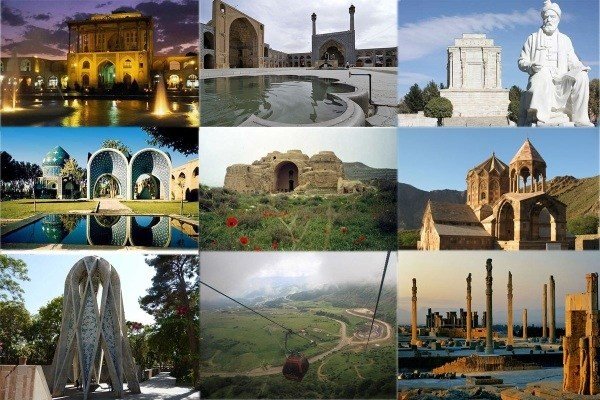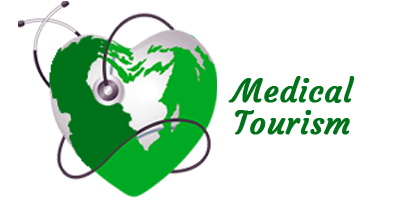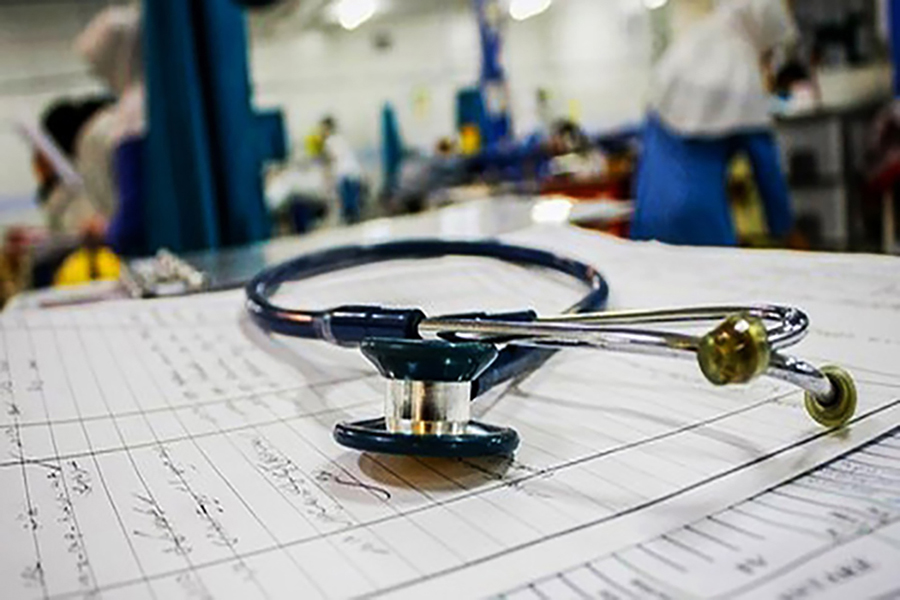
Hair transplant in Iran
October 10, 2020
Tourism in Iran
October 11, 2020Treatment in Iran
Training of medical personnel in our country has gone through a different cycle and changed from traditional education to modern university education. In fact, medical education until the early twelfth century AH was obtained through the study of the student in the presence of the professor’s doctor, and after the end of the course specified by the professor, the young doctor could practice medicine and have students himself.
However, higher education in a new way began with the establishment of the Academy of Arts in the country and the establishment of this center in 1228 AH and had important effects on the emergence and formation of higher education in all fields of science, especially medical education, so that the branch of medicine and pharmacy became in 1297 Shamsi, during the presidency of Dr. Luqman. Adham, separated from the Academy of Medicine as the Higher School of Medicine, and in 1313, the University of Tehran was formally established.
The Faculty of Medicine at the University of Tehran was also opened in 1317, and in 1318 the law for hospital transfer from hospital to university was approved, and clinical education for medical students was transferred from Ministry of Health hospitals to university hospitals.
In fact, medical education in medical colleges, in the year 1319 in the name of the Ministry of Education, Endowments, and Industries of the Ministry of Culture and in the year 1343 in the name of the Ministry of Culture of the Ministry of Education and in the year 1346 with the separation of higher education and the establishment of a new ministry under the supervision of the Ministry of Science and Higher Education and after the victory of the Islamic Revolution, The Cabinet submitted a bill establishing the Ministry of Health, Treatment and Medical Education to the Islamic Consultative Assembly. In the last months of 1985, a new organization called “Ministry of Health, Treatment and Medical Education” was established from the group of colleges and institutions of higher education affiliated to the Department of Medicine and the Ministry of Health.
A look at medical statistics before and after the revolution
In the years leading up to the victory of the Revolution, most of the doctors trained in the few medical schools in the country were looking to the United States and beyond to continue their education, as a rule that many of our medical graduates went abroad to continue their education. However, the new generation of graduates has not yet entered the field of service after the revolution and entry points after 1963-1965. As a result, the country was facing a serious shortage of doctors, and to make up for this shortage, we communicated for years with Indian, Bengali and Pakistani doctors, some of whom had completed their medical careers for four years, and most of them spoke Persian and indigenous languages. The Iranians were not familiar.
According to the statistics announced in 1957, before the victory of the Islamic Revolution, the total number of doctors holding the medical system card in the country was 14,700, including about 6000 foreign doctors. That is, half of the health and treatment sector in the country before the revolution in the field of general or specialized doctors, was dependent on foreign doctors. But after the victory of the Islamic Revolution and in recent years, nearly 180,000 doctors were trained in medical universities across the country. Before the victory of the revolution, about 4 medical colleges were established in universities, but now there are about 62 universities and 170 medical schools across the country, and the number of medical students could increase from about 4 before the victory of the revolution to more than 6000. People increased every year.
In the past four decades, the remarkable growth in the number of medical universities in all governorates of the country, especially the deprived governorates, and the increase in the number of medical sciences graduates, especially women, were among the successes of the laws related to the presence of these graduates in deprived medical fields. In fact, in the circumstances of those days in Iran and the early victory of the revolution, despite the weakness of the medical infrastructure and the start of the war on our country, officials did not neglect the field of training doctors and health change, as statistics show.
Do we have a shortage of doctors?
Despite the changes and development of medical specialties in Iran several times in the past four decades, the whispers of the lack of doctors by the officials of the Ministry of Health raise the question of whether our country faces the problem of a shortage of doctors?
In this regard, Dr. Baqer Larijani, Deputy Minister of Education at the Ministry of Health, pointed to the development of medicine in the country in recent years, adding, “The desire of volunteers to study medicine is still high and continues to be of interest to high school graduates.” In the last eight years, we had about 60 universities. Iran has 45 medical schools. But there are only 200 colleges in all of Europe, and we have witnessed explosive growth in the number of courses and degrees in the last decade.
“We have 60 medical universities and 45 dental colleges, while there are 200 dental colleges all over Europe,” he said, referring to the statistics of the past eight years in the field of medical education. In fact, in the last 10 years, 7 universities, 17 colleges, 9 medical courses, 21 dental schools, 7 pharmacy schools and 38 nursing schools have been established. In addition, 744 field courses were added to the specialized doctoral program and 750 field programs for the master’s program.
Those who are concerned about not having a doctor should wait a bit
According to Dr. Larijani, in 1997 alone, we had 55,000 medical students, 30% of them were locally accepted, and after graduation, they have to work in their city for 10 years. Therefore, people interested in the capacity of the medical field must wait some time for this increase in capacity to materialize. In fact, according to the 10-year statistic of the Ministry of Health, medicine is 75%, dentistry 27%, pharmacy 49%, nursing 1
37%, midwifery had a 14% increase in capacity. Of course while we are in the specialized group, and despite the increase in some areas, we are now facing a lack of luck in some other areas, to the point that the emergency field as a specialized field faces 80% of the empty capacity, which should have been thought.
At the Ministry of Health, in an interview with ISNA, the training of human resources in medical sciences is based on the needs of society and we do not face a shortage of doctors, and he said: Currently, 55,000 science students are studying medicine in the country and we have trained about 120 thousand medical employees in the country, and 55 thousand graduated Currently student, community needs will be met in the medical fields.
He emphasized that so far, more than 180,000 people have graduated from universities in the fields of general and specialized medicine, and said: About 120,000 of them studied in general medicine and the rest studied in specialized courses.
The Deputy Minister of Education at the Ministry of Health stated: “Currently, our process of accepting and training human resources in the field of medical sciences depends on the scientific results of human resource studies separately at Kerman University for Medical Sciences, the Center for Development Studies and the Ministry of Education.” Health has been achieved, and this is happening so we do not face a shortage of manpower in the medical field, although we may face problems in distributing this workforce in different regions.
Akbari also emphasized: Given the ability to accept students in various fields of medical sciences, which is based on the needs of society and also the delay in leaving the power of medical sciences to provide services, we do not face a shortage of human resources in medical sciences. In fact, the provision of medical services in the medical fields is not the same as the employees who retire after 30 years of providing services, but these people participate in providing services as long as they are physically and mentally healthy, thus meeting the needs of society from these services. At the same time, and with this process, our entry to universities will be balanced by the exit of the workforce from these centers, and we will not have a shortage of manpower in the medical fields.
We must not suffer the fate of the technical and human disciplines
Regarding the number of graduates in three fields of pharmacy, dentistry and medicine per year, Dr. Akbari said: “In total, we train about 10,000 people annually in these three fields of medicine in governmental and non-governmental universities, and society needs employment.” There are 10,000 people in these three fields, and the number of admissions should not increase in these fields, because if there is a lot of employment, we will face the fate of technical and human sciences fields in the future, although we are heading in that direction now. We do.
Over-training in medical fields
According to studies conducted by the Ministry of Health from 1404 onwards, we will face a surplus in the workforce in the field of medical sciences. Because according to the statistics of 120,000 doctors in the country and also 55,000 medical students in universities, we will face an excess of medical strength.
Concerns about not having a misplaced doctor
The Deputy Minister of Education at the Ministry of Health emphasized that the concern about the shortage of doctors in the country is unfounded, adding, “The point that families should pay attention to is that at the present time there is a very high cost to send their children to medical fields.” They cite job security and high income as reasons for this procedure, but I must emphasize that with the current trend, we in general practitioners will not have a good outlook at all for the next few years, that is, if a person studies general medicine, he will have a good job. It will not be in the future. As in the current situation, he does not have a high income.
Families should not invest in medicine
“People are completely wrong if they think of investing in their children to study medicine in the hope that their children will have a job guarantee in the future,” said Dr. Akbari. Because with the increase in the capabilities that have been carried out and the statistics of 55 thousand medical students in the country, this perspective will not happen, and it is as if we are not facing a shortage of doctors yet.
What is the status of specialized specialties?
On the need for manpower in specialized courses, Dr. Akbari: There are two issues in this regard. Firstly, there are a lot of capabilities in this field, and in fact, we have established almost all specialized fields in the country, and in some fields, such as neurology and surgery, due to the heavy workload, we are reluctant to participate in these areas, but in general as there were An increase in the ability to accept these majors. On the other hand, in some areas, our energies are currently empty. For example, in fields such as obstetrics, internal medicine and emergency medicine, we are facing a shortage of volunteers, which means that we have capacity in these areas, but there are no volunteers.
Iranian medical horizon to 1404
The Deputy Minister of Education at the Ministry of Health said: Of the 180,000 general practitioners graduated in the country, about 46,000 have become specialists or sub-specialists. In addition, 16,000 of these general practitioners study in specialist residency courses and are considered specialist students, reducing the total number of 180,000, and as a result we reach 120,000 active and graduate GPs.
Graduates of three famous medical specialties
About 6,000 people will graduate in medicine, about 1,800 in dentistry, and 1,400 in pharmacy. In addition, annually a number of graduates enter the country from abroad. So we currently have about 10,000 students in universities abroad. Therefore, this number of students is added to some extent to the internal statistics.
Akbari stressed: According to the announced statistics, the per capita number of doctors per patient in Iran ranges between 1.7 to 1.9 per 1000 patients, while the standard for this number in the world ranges between two to three doctors per patient, and fortunately it must be said with the current situation. For the country, the system of providing health services and the budget that the government allocates for the use of doctors until 1404, the per capita number of doctors per patient in Iran will be equal to international standards without the need for any increase in capacity.
According to Esna, the look is SriBased on the above statistics, it undoubtedly shows that our medical education has achieved great success in training human resources over the past four decades, and faculty members in medical departments in providing medical personnel to the state. They have done so much that we do not have the problem of “doctors shortage” in the country in general, but the fact that the equitable distribution of the workforce across the country, especially in the medical field, has not occurred cannot be hidden. Since most of the skilled and specialized forces in the field of medicine, after completing their commitment period, choose capitals such as Tehran, Isfahan, Tabriz and others as their place of service, and thus, unfortunately, many fields, especially in areas deprived of manpower. Specialists and experts in the field of medicine are disenfranchised, and instead of increasing the acceptance capacity in the field of medicine, it is better for the authorities to implement effective incentive policies for the equitable distribution of doctors in various regions, especially deprived areas, so that all Iranians enjoy equal health services.







